INDEX
3. How to learn
◆What does ECC mean?
ECC stands for “Everyday Check Cards”.
ECC is designed for self-study after lessons.
It helps students with memorizing words, expressions and the rules of grammar which have been introduced in each lesson. And by repeatedly using it, it also helps students strengthen the memory.
The original ECC is a pack of cards. They are meant to be carried around everywhere students go.
This is a digital application of ECC. The main advantage of digital ECC is that students can hear the sounds of words and expressions.
◆What is important when you study with ECC
As ECC is originally a pack of cards, it has front sides and back sides. On the front side, you find questions. On the back side, you find their answers and you can hear their sounds.
As ECC is originally a pack of cards, it has front sides and back sides. On the front side, you find questions. On the back side, you find their answers and you can hear their sounds.
If your aim is to speak Japanese, don’t just listen but listen and repeat each word and expression until you can smoothly and independently say them. Then memorize them so that you can say them without referring to the answers. Your memory should be perfect. Less than 100% memory is enough for listening and reading but useless for speaking. Please remember that even 99% is not enough.
And then, to keep them in your memory, practice reviewing the memorized cards every day until you feel confident that you will never forget them.
Tap the “hamburger button” or “Login” icon to log into the application.
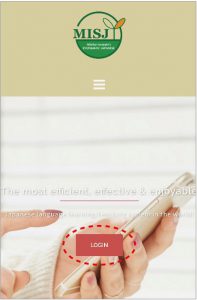
Type in the provided ID or your e-mail address and password.
Then, tap the “Login” icon again.
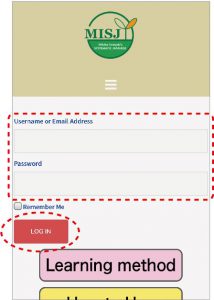
To start studying, tap “CONTENTS”. Then, you can see the section index.
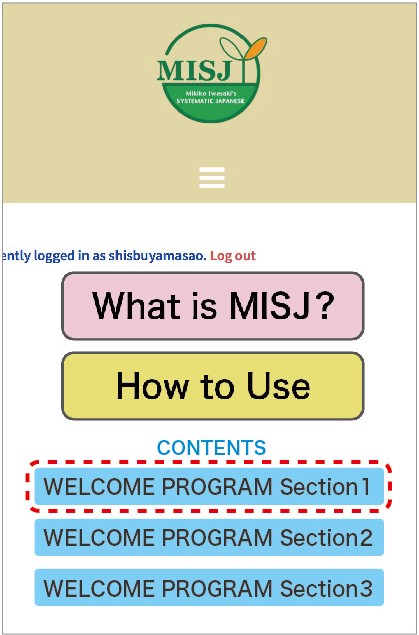
(To study with this application, please register and obtain your ID & password.)
Section 1: Orientation & Lesson 1 ~Lesson 4
In this section, you can learn how to count numbers and how to make and handle NOUN sentences.
In this section, you can learn how to make and handle VERB sentences.
In this section, you can learn how to make and handle ADJECTIVE sentences.
You can also learn about VERB conjugation as the preparation for the next MISJ NOVICE PROGRAM.
In case you select the section 1, you will see the lesson index like this. Tap the lesson number which you would like to study.

For example, if you tap W00, you can see the contents of theORIENTATION part of the MISJ WELCOME PROGRAM.
Original ECC is a pack of cards. Each card had a front side and a back side.
In digital ECC, the cards appear successively in the order as follows.
card-1 front, card-1 back, card-2 front, card-2 back, and so on.
Just like turning the pages of a book, if you swipe the display to the left, the next part appears. If you swipe the display to the right, you can go back to the former part.

If you swipe the display to the right, you can go back to the former part.
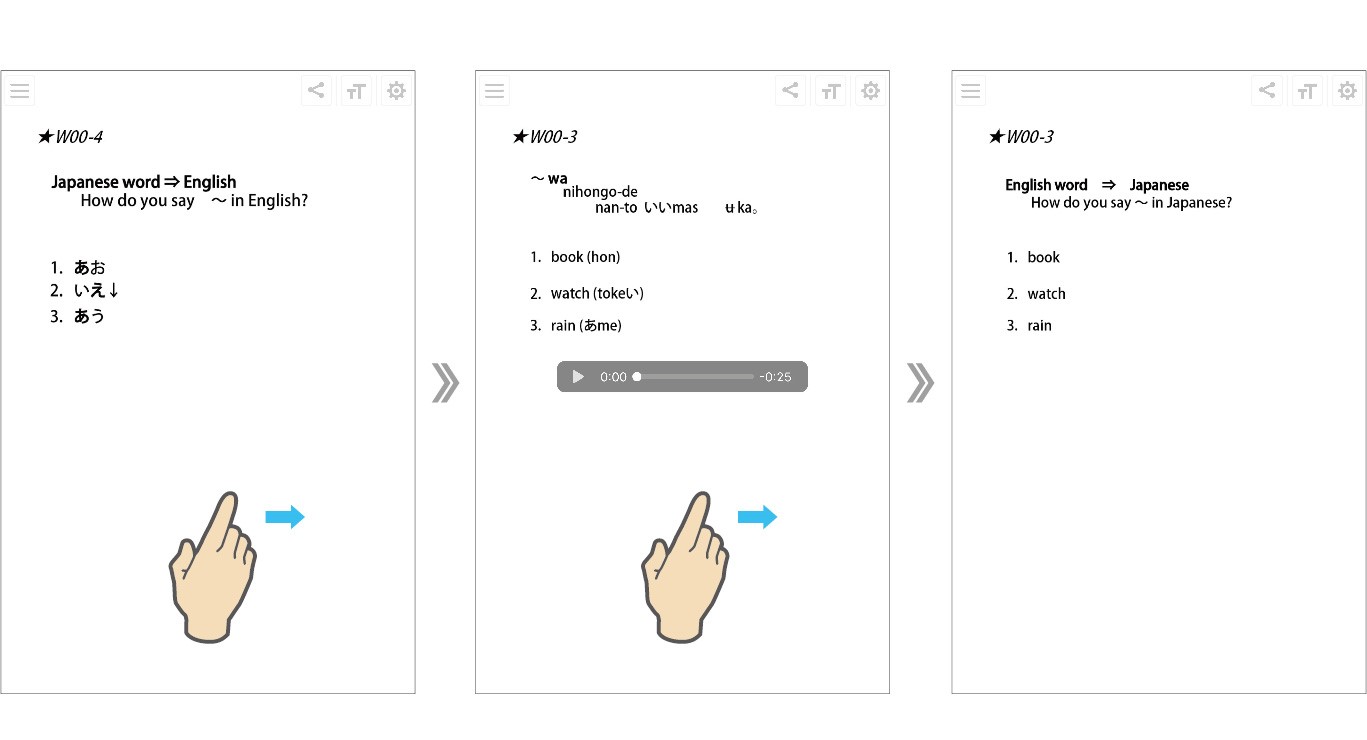
If you cannot open the next part when you swipe the display to the left, it means it is the last part of the lesson.
To quickly scan through pages, tap the bottom part of your screen. A scrubbing menu will pop up. By dragging the menu to left or right, you can quickly move forward or back through the lesson.
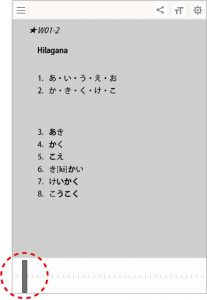
To go back to the first part of the lesson which you are studying, tap the “hamburger button”.
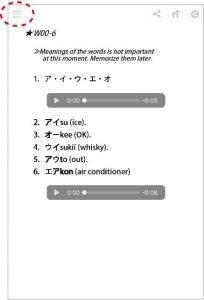
And to re-study the same lesson, tap the “Start”.
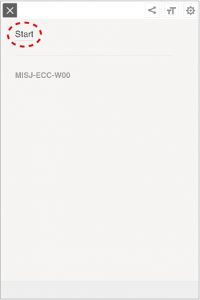
To go back to the lesson index, tap the “back button” on your browser.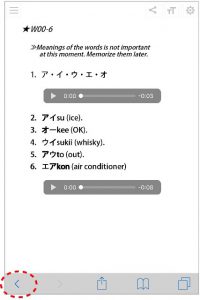
First of all, memorize how to read the five letters introduced at the beginning of each lesson. This is very important. In MISJ, the alphabet which are temporarily used to show Japanese sounds will gradually be replaced by Japanese characters. This means if you cannot read these characters, you will be unable to read the contents of each card.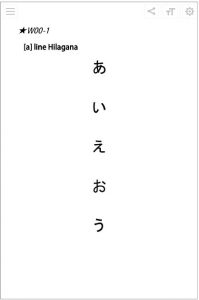
You will learn two types of Japanese basic characters, which are called “Hilagana” and “Katakana”.
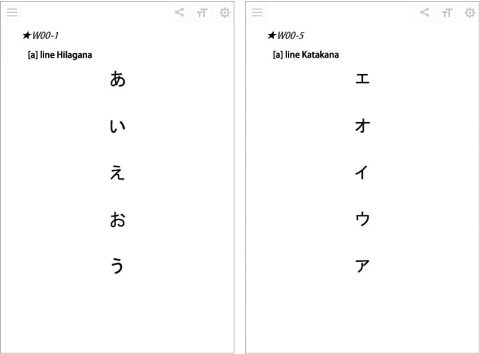
They are very useful because they directly show the pronunciation of each word and expression. If you can read these characters, you can check how to pronounce each word and expression not only aurally but also visually. Letter reading ability will help you save a lot of time when you review cards in the future.
In Japanese, which sound or which part of the word is pronounced at a higher or lower pitch is important. Sometimes the pitch difference shows the difference of the meanings. In MISJ, the part which is normally pronounced at a higher pitch is written in “bold”.

“↓”: This mark shows that when the word is used in sentences, the next coming sound is usually pronounced at a lower pitch.

“W” means that this is one of the cards for the MISJ WELCOME PROGRAM. 01-4 means that this is the fourth card of Lesson 1.
A black star mark beside the card number shows that everything written on this card is important and you should learn and perfectly memorize them before you start learning the next lesson.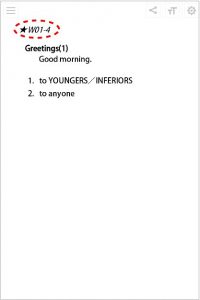
A white star mark shows that the card includes some extra words or expressions.
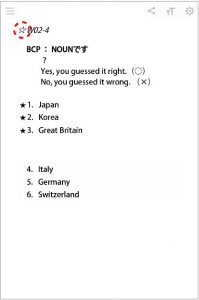
Practice and memorize the words and expressions with star marks first. As for the words and expressions without a star mark, you can memorize them later
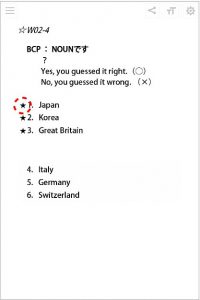
In Japanese, you have to choose words or expressions by considering whom you are talking to or whom you are talking about.
“IN” means INSIDER. In MISJ, a person who is mentally close to you such as yourself or your family are called “INSIDERS”. The mark “IN” means that you should use the word or expression when you talk about INSIDERS.
“OUT” means OUTSIDER. The person who is mentally far from you are called “OUTSIDERS”. The mark OUT means that you should use this word or expression when you talk about “OUTSIDERS”.
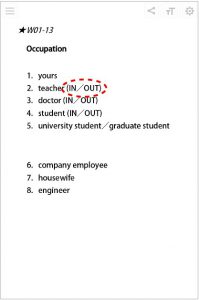
“F: FEMININE” means the word or expression sounds feminine. So, basically, the word or expression is used only by women.
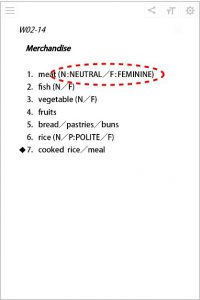
“P: POLITE / F” or “P / F” means that the word or expression is used not only by women but also by men when speaking to ELDERS, SUPERIORS or ladies.

Sometimes you will see “◆” mark.
This “◆” mark shows that the word or expression is an exception.
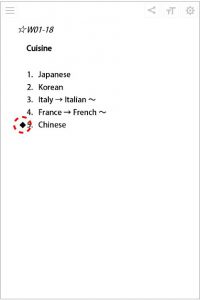
“CB” stands for “Character Blocks”. This is a special sign used in MISJ PROGRAMS.
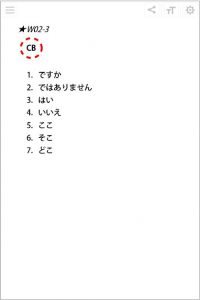
They are the combination of letters which show the functional parts of sentences. In addition to the basic letters introduced step-by-step in each lesson, letters for CB are also replaced by Hilagana. So, be sure to memorize the CB before learning the following cards. The purpose of memorizing CB is the instant recognition of the functional parts of sentences. So, it is not necessary to become able to read these letters one by one.
“BCP” stands for “Bottom Changing Pattern”. It is also the special sign used in MISJ PROGRAMS.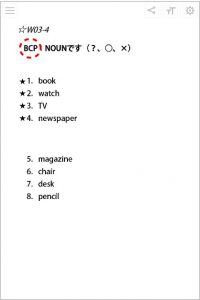
(〇)This mark shows affirmative answers
(Ⅹ)This mark shows negative answers.

To listen to the audio, tap the “▶ button”. (You may need to press the button for about a second, not too short nor too long.)

You can temporally stop the audio by tapping the pause button.
Please note there is no way to stop the audio of sounds permanently in the middle of listening.
If you tap another “▶ button” before finishing the current audio set, you may hear two audio files at the same time.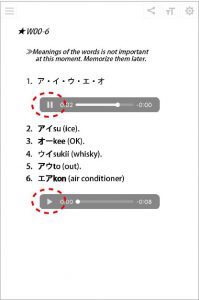
Now you are ready to start learning with ECC!

